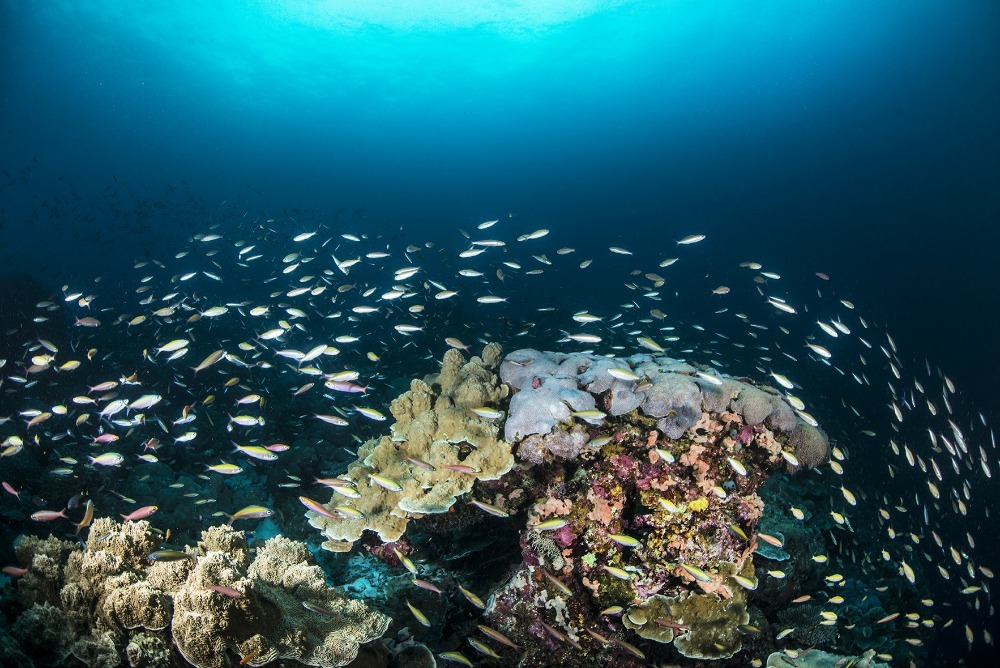
Anyone looking for their own little slice of island paradise likely has the Maldives firmly on their wish list. The postcard-perfect archipelago is made up of 26 coral atolls within which there are close to 1,200 islands — with only around 200 of those islands being inhabited. Resorts of all kinds, from basic to ultra-luxe, are found throughout the Maldives and which you opt for depends on budget and they type of vacation you’re after. The Maldives are a hot honeymoon destination for cocooning couples, but a visit here will also put you in close proximity to some of the best diving and snorkelling in the world, as well as the chance to surf, go deep sea fishing, or explore the tiny island capital of Malé. If you’re itching to start planning your trip to these tropical islands, read on for everything you need to know about visiting the Maldives.
You can get from Ibrahim Nasir International Airport to the capital of Malé via public ferry transfer or Airport Express Speedboat transfer. Public Ferry costs MVR 10 and travel time is around 15 minutes.
The Airport Express costs MVR 35 and travel time is just five minutes. Note that ferries don’t operate during Friday prayers and schedules are subject to change during Ramadan and public holidays, as well as during bad weather.
Transfer by vehicle is only an option if you’re staying on Hulhumale Island, as the airport island of Hulhule is joined to Hulhumale by a raised causeway. There are no private hire taxis available from the airport. For guests staying in Hulhumale and wishing to transfer by private vehicle, a guesthouse vehicle transfer is required to be prearranged. For guests transferring to Hulhumale there is also a public bus that operates from the international terminal. There are two buses that run from the airport, but only the INIA bus will allow luggage.
For other islands, getting to and from the airport will likely be via prearranged transfer with your resort of choice. If this is the case, you’ll be met at the airport by a resort representative who will facilitate the journey. This may involve a ferry, seaplane, or speedboat (or a combination thereof) depending on which island you’ll be staying on.
Once you’ve arrived in paradise, you likely won’t be doing too much moving around. Since most islands are small enough to traverse on foot, there’s no need to worry about taxis or buses. If you’re on Malé (which is also small enough to walk) public transportation is an option. Pay on board the bus (MVR 3) and change will be given. USD are accepted if notes are in good condition.
Taxis are also available. They can be easily distinguished by the TAXI sign on the roof of the vehicle. There is a set price of MVR 25 per stop with an additional MVR 5 per item of luggage. You can flag down a taxi anywhere in the street, but it can be almost impossible to get a taxi when it rains. Taxis are also often shared if there’s space available for more passengers, but the cost remains the same.
While most people make their way to the Maldives to do little else than lie on a beach, there’s more to this multi-island paradise than surreal stretches of sand. The capital city of Malé is well worth spending some time in. As one of the smallest capitals in the world, exploring shouldn’t take you more than a half day, but there are some interesting things to see here. Start with the National Museum to get a better sense of the history of the Maldives. You can also stop by the local fish market to see a slice of daily Maldivian life, or visit the old Friday Mosque (Hukuru Miskiiy), standing since 1656. It’s unassuming from the outside, but the inside is where you’ll find some noteworthy carvings and woodwork. Non-Muslims just need to make sure they get permission to enter.
When you’re not soaking up the sun or lounging poolside, donning a snorkel mask or going diving in the Maldives is a must. Visibility here is fantastic as is the range of sea life you’ll be spotting. Arrange with your resort for transfer to the best nearby snorkel spots. In addition to seeing what’s going on underwater, the Maldives are also knows as a world-class surfing destination, as well as a great place to do some stand-up paddleboarding.
Lastly, if you’re into playing or watching sports, baibala is a very traditional sport in the Maldives. It’s played by two teams, one inside a circle and one outside. The group outside must run into the ring, tag an opponent, and escape without being tagged in return. Any person tagged is disqualified from that round. It’s traditionally played following Eid-Al-fithur, and requires speed and agility. Check if there’s a tournament on while you’re there. Or, if you see a group of kids playing, ask to join in!
If you’re fortunate to be in the Maldives in November, make sure you join the annual Republic Day celebrations on November 11. There’s always lots of pomp and ceremony with speeches, parades, marches, and fireworks — and best of all, the events are usually all free.
The Island President is the story of former Maldives president Mohamed Nasheed, and his tireless efforts to raise awareness about global warming and its effect on the Maldives. This movie will leave you not only thinking about the future of these Maldives islands but also about climate change worldwide.
Zero Degree Atoll is a local Maldivian band that fuses traditional music and lyrics with jazz, rock and soul music — easy listening and perfect for Malé café culture.
Pick up a copy of Gate Crashing Paradise by Tom Chesshyre for some great tips on exploring the Maldives without setting foot on a luxury resort.